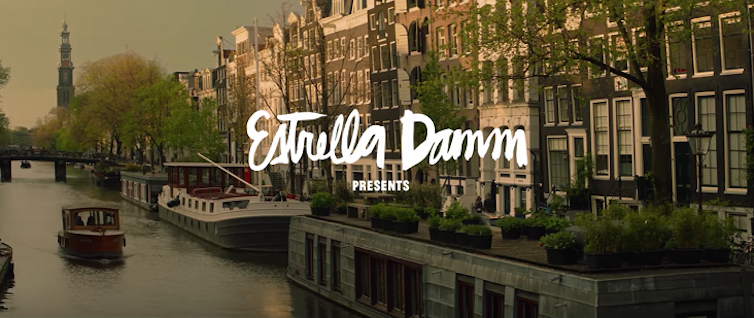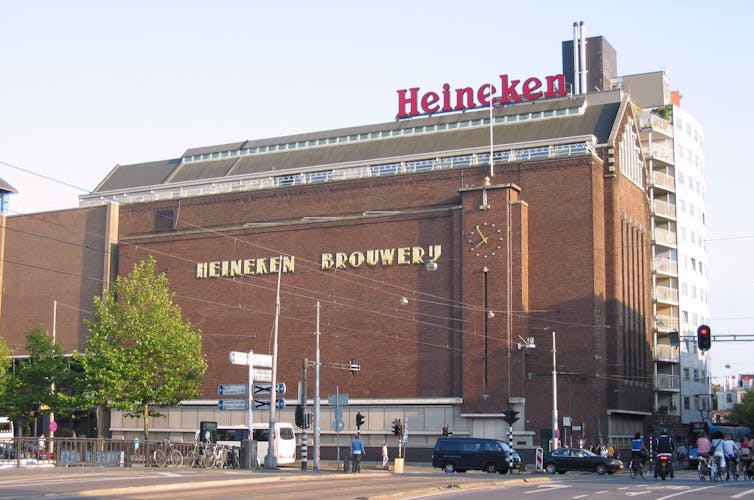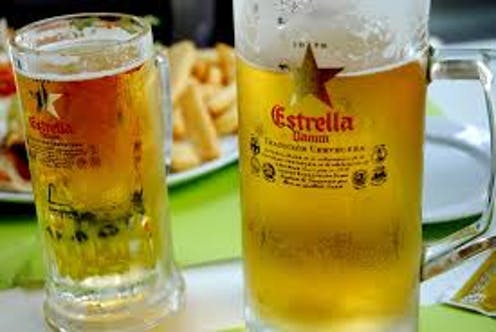The great film director Stanley Kubrick once wrote about the way in which the line between art and commerce was increasingly blurred: “Some of the most spectacular examples of film art are in the best TV commercials,” he told Rolling Stone magazine in 1987.
And the art of branding in today’s saturated market – or so conventional wisdom suggests – is to create value for your brand by linking them with meaningful experiences and using that to manage consumers’ emotions towards the brand.
Our cultural knowledge of brands is woven into the very fabric of our everyday lives and shapes the choices we make. So, for example, the principle behind Ralph Lauren’s famous quip that “we don’t sell jeans, we sell self-confidence” can be applied to most successful brands.
Arguably, we subconsciously associate Levis with making us look “cool”, while Nike inspires and empowers us to be “greater” – see, for example, its “Find Your Greatness” campaign. Disney, meanwhile, gives us escapism and fantasy while Apple promises greater community and connection through its technology.
By investing in these cultural messages over time, brands can strengthen perception of them by consumers as inseparable from these meaningful qualities with which they have become associated. As branding academics and practitioners alike understand, brands flourish or perish on the strength of this relationship.
Beer is life
Storytelling has always been an important way for brands to establish and maintain this meaningful relationship with consumers. These brand narratives are not about finding logical solutions to complex problems – or indeed about telling potential consumers about how useful or high quality their products are – not directly, anyway. Rather, they are about ingraining or reinforcing the symbolic and cultural value of the brand through their story which aims to create or strengthen a meaningful connection between the brand and consumer.
The aim is that their customers begin to feel that the brand is inseparable from aspects of their identity.
Typical of this idea is the 16-minute short film La Vida Neustra (Our Life), promoting the oldest brand in Spain and Catalonia, the Barcelona-based beer, Estrella Damm. The film stars Game of Thrones actor Peter Dinklage and has been viewed more than 15m times.
We see protagonist Anton move from Barcelona to Amsterdam for an amazing job opportunity. He leaves behind beautiful girlfriend Cora and his equally handsome best friend Rafa. A year of unrest and indecision later, Anton returns to Barcelona to sign over his boat to Rafa. Of course, he discovers he is still in love with Cora – but of course she and Rafa are now an item.
Dinklage plays a narrator of sorts, Chad Johnson – a character in the style of Dickens’s ghost of Christmas past, guiding Anton through past memories towards a revelation typical of consumer capitalism; he already had a great life but continued to believe far away hills were greener. Johnson tells him: “But you wanted more.” In the end, Anton “lets go of the anchor”, hands over the key of the boat (the anchor a metaphor to past lives and relationships) to Rafa and Cora and embraces his new life in Amsterdam.
Clash of stars
Beneath the somewhat frivolous plot, there is something far more interesting going on from a branding perspective. Canadian anthropologist Grant McCracken argued in 1986 that brands become meaningful by investing in culture – signs and symbols that consumers identify as culturally meaningful. The Estrella film marks a concerted effort by the gold star of the Spanish brand from Barcelona to antagonise its fierce rival and market leader in Amsterdam, the red star of Heineken.
The opening scene of the film depicts the quintessential image of Amsterdam with its beautiful canals and unmistakable Dutch architecture.

Sense of place: the opening of Estrella’s Amsterdam film. Estrella Damm
When I first saw this ad with a couple of friends, they said they didn’t know Estrella was Dutch. I said I didn’t think it was either. The beer’s name, Estrella Damm, sounds as if there’s a connection with Amsterdam –but in fact the beer was first brewed in 1876 by August Küntzmann Damm, a recent arrival to Barcelona from the Alsace region of France.
Sense of belonging
The film starts with quintessential images of the canals and townhouses of Amsterdam and jumps to the instantly recognisable cityscape of Barcelona and then moves back and forth between the two cities. It ends with Anton blissfully cycling through Amsterdam and hanging out with his new friends having fully embraced his new life and let go of the “anchor” to this past.
Yet throughout this turbulent time, the only constant, in the wake of disloyal friends, fleeting romances and traded possessions has been Estrella and its symbolic ties to his home city Barcelona.

Landmark: former Heineken brewery in Amsterdam. Mtcv via Wikimedia Commons, CC BY-ND
The film marks a potentially risky but rewarding strategy by Estrella and potentially other brands to invest in a sense of place that arguably, “belongs” to their rival competitors. As the narrative suggests, despite being in the home of “the Heineken Experience”, Estrella is the beer of choice and acts as a more effective medium with which we can celebrate and give thanks for life, love and beer.



 Low pay and few contracts make freelance journalism a bleak prospect in 2024
Low pay and few contracts make freelance journalism a bleak prospect in 2024  Adidas Ignites Passion with 2024 Athlete Pack Including 49 Footwear Models
Adidas Ignites Passion with 2024 Athlete Pack Including 49 Footwear Models  Canada Set to Enforce OECD Crypto Tax Standards by 2026
Canada Set to Enforce OECD Crypto Tax Standards by 2026  Mexico’s slow slide towards vigilante violence
Mexico’s slow slide towards vigilante violence  How India’s economy has fared under ten years of Narendra Modi
How India’s economy has fared under ten years of Narendra Modi  Apple Pulls WhatsApp, Threads from China Store; US Moves to Force TikTok Sale
Apple Pulls WhatsApp, Threads from China Store; US Moves to Force TikTok Sale  Why the government’s haste in changing the health system could come back to haunt it
Why the government’s haste in changing the health system could come back to haunt it  Mister Donut and Gion Tsujiri Unite Once More for Kyoto-Inspired Donut Delights
Mister Donut and Gion Tsujiri Unite Once More for Kyoto-Inspired Donut Delights  The Original Mouthful: McDonald's Australia Revives Legendary Big Mac Chant with a Tech Twist
The Original Mouthful: McDonald's Australia Revives Legendary Big Mac Chant with a Tech Twist  London Marathon: how visually impaired people run
London Marathon: how visually impaired people run  Tesla Dismisses 285 Buffalo, New York Workers in Restructuring Efforts
Tesla Dismisses 285 Buffalo, New York Workers in Restructuring Efforts  Will global oil supply be at risk if Iran and Israel pull the Middle East into war?
Will global oil supply be at risk if Iran and Israel pull the Middle East into war?  Meta AI to Supercharge WhatsApp, Facebook, Instagram via Powerful Integration
Meta AI to Supercharge WhatsApp, Facebook, Instagram via Powerful Integration 
































